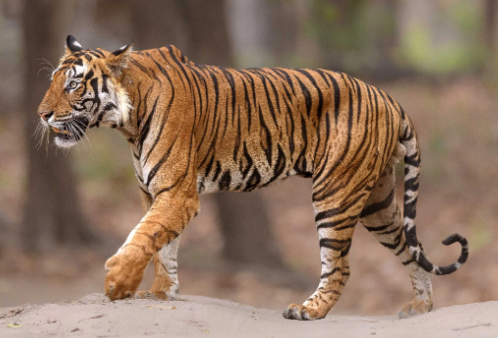Title: Discovering the Majestic Bengal Tiger
Introduction
The Bengal tiger, one of the most iconic big cats in the world, commands a sense of wonder and respect. Known for its striking appearance and elusive nature, this majestic animal is not only a symbol of strength but also a crucial part of the ecosystem in which it lives. Understanding more about the Bengal tiger is not just fascinating; it also highlights the importance of conservation efforts to protect this endangered species.
The Habitat of the Bengal Tiger
Bengal tigers are predominantly found in the forests of India, with smaller populations in Bangladesh, Nepal, and Bhutan. They thrive in diverse habitats, including tropical rainforests, grasslands, and mangroves. These varied environments provide ample cover for hunting and raising their young. However, the expansion of agriculture and urban development has significantly diminished their natural habitats. Protecting these areas is essential, as they serve not only as homes for tigers but also for countless other species that share their ecosystem.
Physical Characteristics and Behavior
Bengal tigers are known for their striking orange coats with black stripes, which allow them to blend into their natural surroundings. Adult males can weigh between 400 to 500 pounds, making them one of the largest tiger subspecies. They are solitary creatures, marking their territories and communicating through vocalizations and scent markings. Their keen senses and powerful physique make them formidable hunters, primarily preying on deer, wild boar, and other large mammals. This apex predator plays a vital role in maintaining the balance of their habitat by regulating prey populations.
Conservation Efforts and Challenges
Despite their status as a national treasure in India, Bengal tigers face numerous threats, including poaching and habitat loss. Conservation efforts, such as the establishment of protected reserves and anti-poaching initiatives, are critical for their survival. Organizations and volunteers worldwide are working tirelessly to raise awareness and implement successful programs to ensure a future for these magnificent cats. Participating in or supporting these initiatives can make a difference and contribute to the preservation of the Bengal tiger’s legacy.
Conclusion
The Bengal tiger is not just a beautiful creature; it is also a vital component of the ecosystems in which it resides. By learning more about these majestic animals and the challenges they face, we can all play a part in their conservation. Engage with local wildlife organizations or simply spread awareness in your community to help protect the Bengal tiger for future generations. Together, we can ensure that this magnificent species continues to thrive in the wild.

